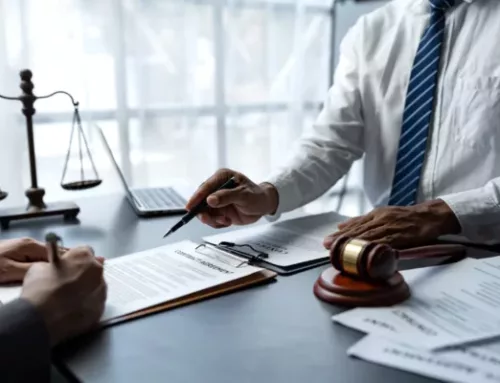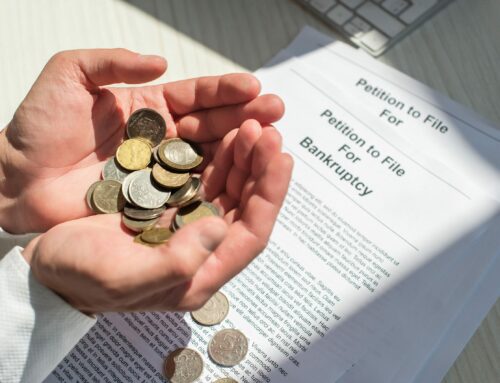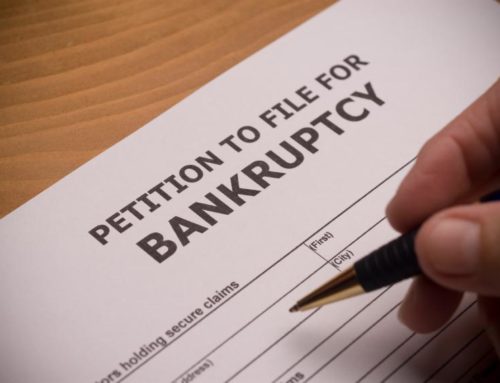Getting Student Loan Financial Relief Using Bankruptcy
Student loans have become a pervasive financial challenge for many. It prompts individuals to seek relief through bankruptcy. Understanding the complexities of student loan bankruptcy is crucial for those looking to manage their debt and secure a more stable financial future.
Quick Summary:
- Student loan bankruptcy involves including student loans in a bankruptcy filing. Discharging them is generally challenging due to their classification as “non-dischargeable” debts.
- Chapter 7 and Chapter 13 are the main chapters relevant to student loan bankruptcy. Chapter 7 requires the debtor to prove “undue hardship” for student loan discharge. Chapter 13 involves a structured repayment plan.
- Initiating the student loan discharge process involves assessing financial situations. It also chooses between Chapter 7 and Chapter 13 and proves “undue hardship” meticulously.
- Detailed financial documentation, showcasing a minimal standard of living, projecting future hardship, emphasizing good faith repayment efforts, considering dependents’ impact, and documenting health issues are crucial steps in proving “undue hardship.”
This article will discuss the problems and misconceptions about student loan bankruptcy. We will also explore its applications and alternatives.
Is Student Loan Bankruptcy Possible?
Student loan bankruptcy refers to including student loans in a bankruptcy filing. While possible, it’s important to note that discharging student loans through bankruptcy is generally challenging. Student loans are part of “non-dischargeable” debts. That makes their elimination more complex compared to other types of debts.
Individuals may still investigate avenues for alleviating their student loans. That can be possible by showcasing “undue hardship.”
What Types of Bankruptcy Can Help with Student Loans?
Two primary chapters of the bankruptcy code can help with student loan bankruptcy. They are Chapter 7 and Chapter 13.
Chapter 7 Bankruptcy
Chapter 7 allows for the resolution of most unsecured debts. Note that student loans are commonly deemed “non-dischargeable” under Chapter 7. That means the debtor should prove “undue hardship” with success. Proving undue hardship is a formidable challenge. That would need evidence that maintaining a minimal standard of living would be impossible while repaying the loans.
Chapter 13 Bankruptcy
Chapter 13 bankruptcy involves creating a structured repayment plan spanning three to five years. While student loans remain non-dischargeable, the repayment plan allows for more manageable payments based on the individual’s income and expenses. That way, individuals have more leeway to address their financial situation.
What Do I Do in a Student Loan Bankruptcy?
Here is a general guide on how to initiate the discharge process for your student loans:
- Assessing Your Financial Situation: Evaluate your financial circumstances first. Consider your income, expenses, assets, liabilities, and unique challenges.
- Initiating the Bankruptcy Process: Should you decide that student loan bankruptcy is the right path for you, the initial step involves initiating the bankruptcy process under the relevant chapter (Chapter 7 or Chapter 13).
- Proving Undue Hardship: Proving “undue hardship” is pivotal for Chapter 7 bankruptcy.
- Adversary Proceeding: An adversary proceeding is an extra step for Chapter 7 cases to discharge student loans. This separate lawsuit focuses on the dischargeability of student loans.
What Do I Do to Prove My Case Through Undue Hardship?
Specifics may vary, but here’s a general guide on how to strengthen your case:
- Detailed Financial Documentation: Provide comprehensive financial documentation covering income, expenses, assets, and liabilities for a clear snapshot of your financial standing.
- Showing Minimal Standard of Living: Prove that repaying student loans would hinder maintaining a minimal standard of living by outlining essential expenses.
- Projecting Future Hardship: Present evidence projecting future financial hardship during the repayment period. Consider your employment prospects, health, and potential life changes.
- Emphasizing Good Faith Repayment Efforts: Highlight genuine efforts to repay loans. That includes negotiation attempts, forbearance, or income-driven repayment programs.
- Considering Dependents’ Impact: Consider and document the impact of repayment on dependents. Illustrate adverse effects on their well-being if applicable.
- Documenting Health Issues: Thoroughly document health issues and associated expenses to show the financial strain caused by medical conditions.
- Active Job Search Efforts: Provide evidence of active job search efforts if unemployment or underemployment is a factor, including job applications and interviews.
- Recording Negotiation Attempts: Document any attempts to negotiate alternative repayment plans with your student loan lenders. Demonstrating proactive efforts to find solutions strengthens your case.
Are There Any Alternatives to Student Loan Bankruptcy?
Student loan forgiveness and student loan consolidation are alternatives to student loan bankruptcy. Both offer different approaches to managing student debt.
Student Loan Forgiveness
Student loan forgiveness programs offer partial or complete student loan debt forgiveness. Some examples are Public Service Loan Forgiveness (PSLF) or Teacher Loan Forgiveness. But note that individuals who meet specific criteria can qualify for these.
Those who work in public service, teaching, or qualified nonprofit organizations can qualify. They should also have worked for a specified period while making qualifying payments.
Student Loan Consolidation
Student loan consolidation involves combining many student loans into a single new loan. It can come with a lower interest rate and simplified repayment terms. Consolidation can make managing student loan debt more convenient. There will be a single monthly payment instead of many payments to different lenders.
Consolidation can also make repayment more manageable. It can extend the repayment term or offer income-driven repayment options. But note that it will not reduce the debt amount owed.
Forgiveness and consolidation focus on restructuring or reducing the burden of student loans. They do so through specific programs or financial mechanisms.
These alternatives may be more favorable for borrowers who qualify and prefer to avoid the long-term consequences of bankruptcy.
Contact Our Attorneys Today for Student Loan Bankruptcy Assistance
The concept of student loan bankruptcy may seem complex. Yet it is a potential avenue for those grappling with overwhelming student loan debt. The guidance of our experienced bankruptcy attorneys at Thomas E. McIntire & Associates, L.C. can help ensure you have our support. We also have the skills to navigate this challenging journey toward potential debt relief.
Approach student loan bankruptcy confidently and clearly by following a step-by-step approach and understanding the importance of legal representation. Contact us for a free debt analysis for your student loan troubles today!





